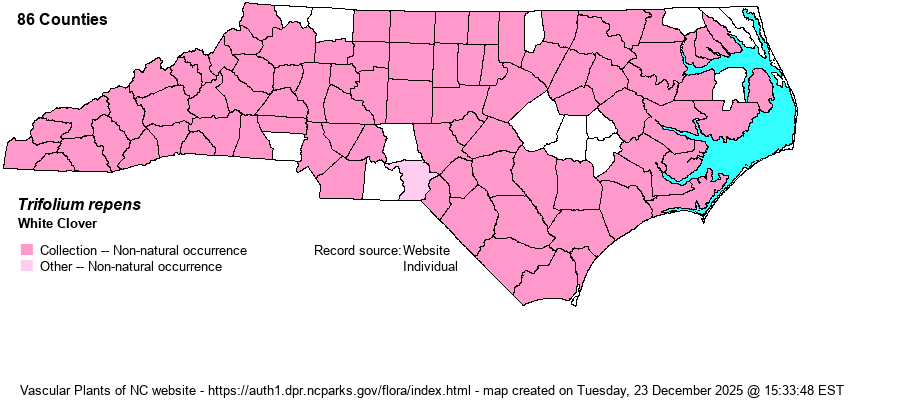| Author | L. | |
| Distribution | Throughout the state; no doubt in every county.
Native of Eurasia; in N.A. throughout except Arctic regions. | |
| Abundance | Generally abundant. | |
| Habitat | Roadsides, lawns and yards, fields, meadows, clearings, disturbed ground, crop fields, campuses. | |
| Phenology | Flowering and fruiting February-November. | |
| Identification | White Clover is even more widespread and well-known than Red Clover (T. pratense). It differs fundamentally from our other clovers in its creeping stems (rooting at some nodes), from which long leaf stalks and flower stalks independently arise. The leaflets sport a whitish arc, much narrower than the chevron of Red Clover. The flowers are white. This is probably the most familiar lawn plant to most people, especially when the white heads of flowers are visible. | |
| Taxonomic Comments | Trifolium is a large genus of some 240-250 species globally, mostly north-temperate zone. Most are readily recognized as a clover by their 3 broad leaflets and globular to hemispherical head of densely-packed flowers. Flowers vary from white to pink, and red; the hop clovers have tiny yellow flowers. Some species were introduced for their forage value for livestock, others hitched a ride with hay, packing material, etc. Our two native species -- T. carolinianum and T. reflexum -- have suffered great loss of habitat and are now rare. | |
| Other Common Name(s) | | |
| State Rank | SE | |
| Global Rank | GNR | |
| State Status | | |
| US Status | | |
| USACE-agcp | FACU link |
| USACE-emp | FACU link |

